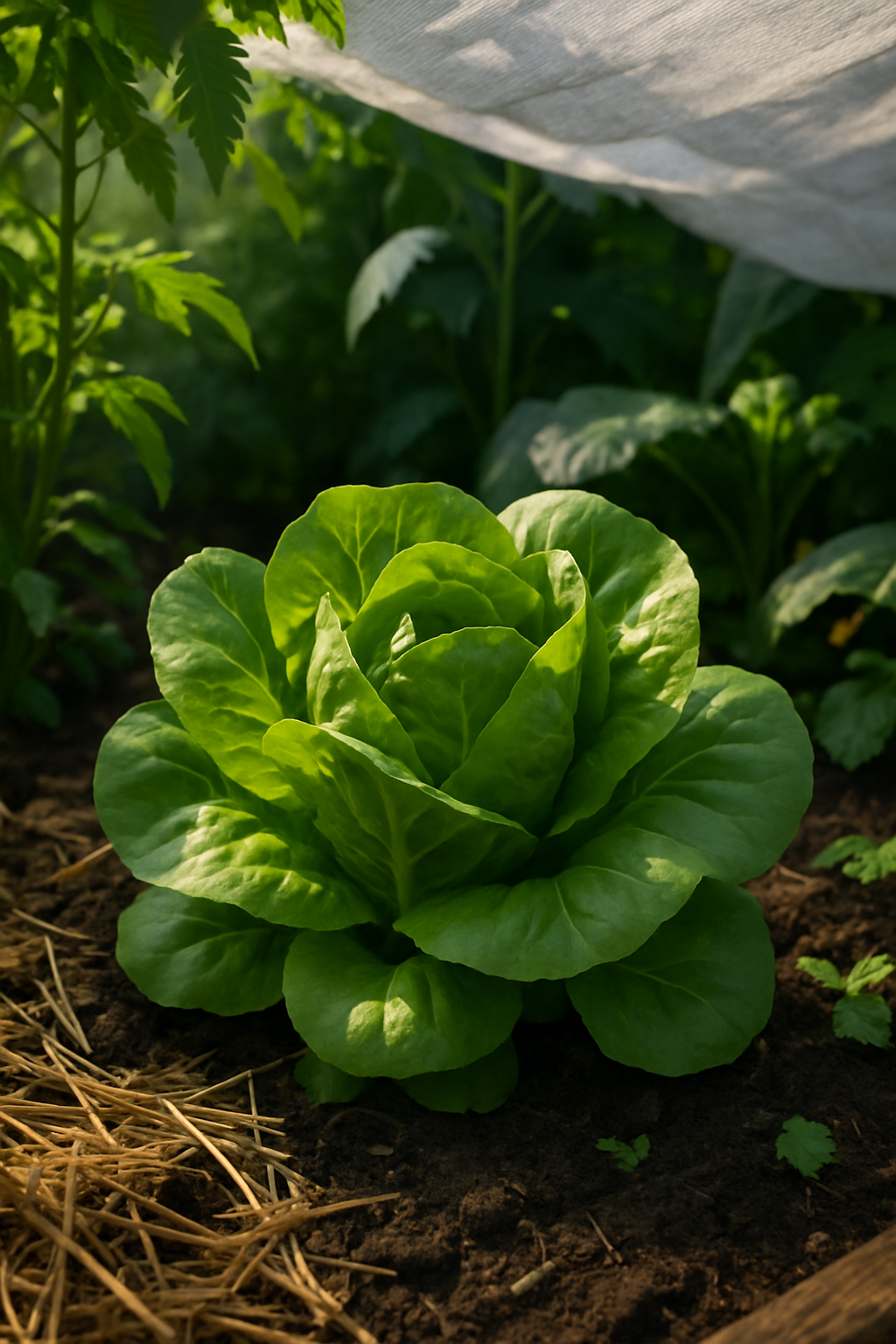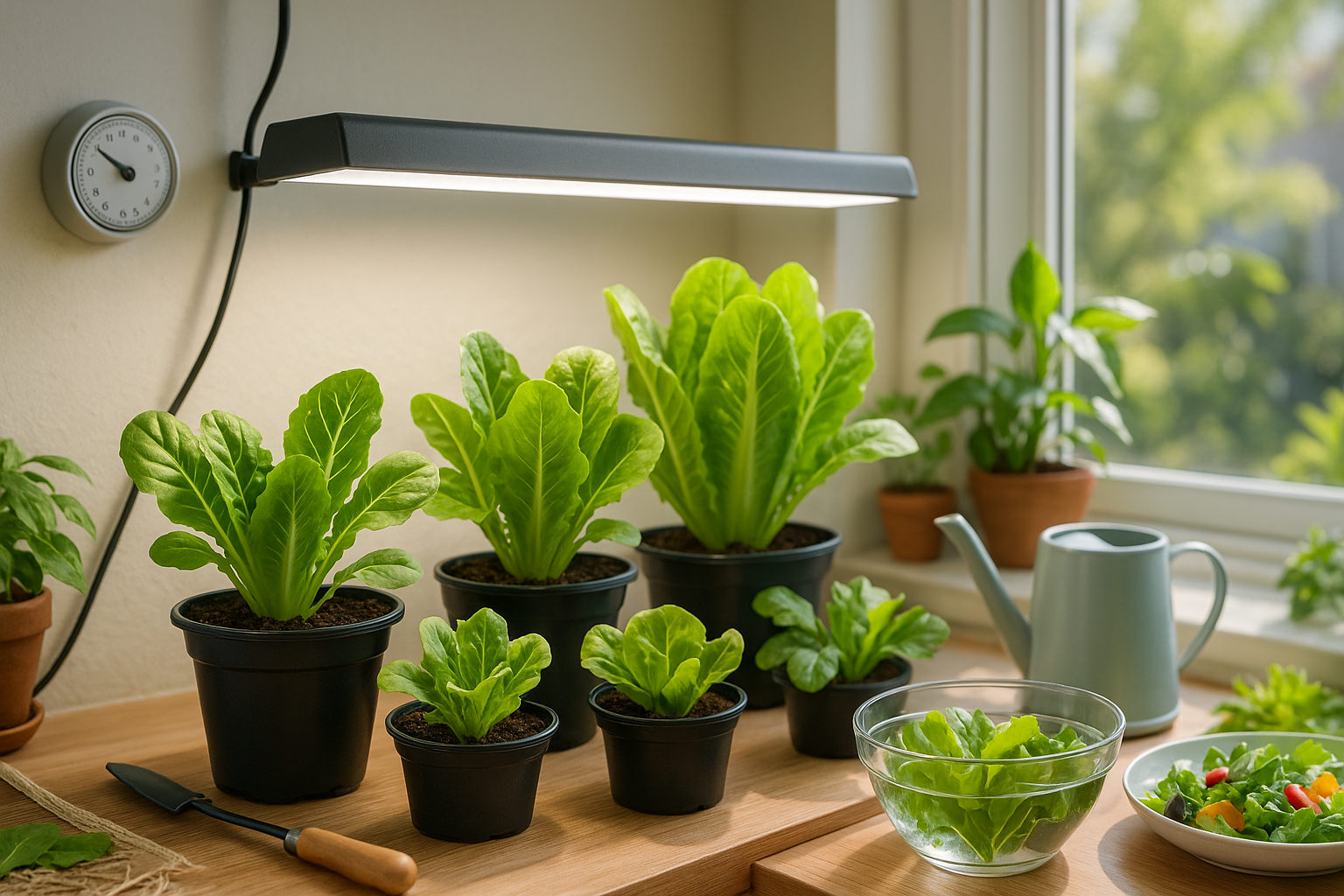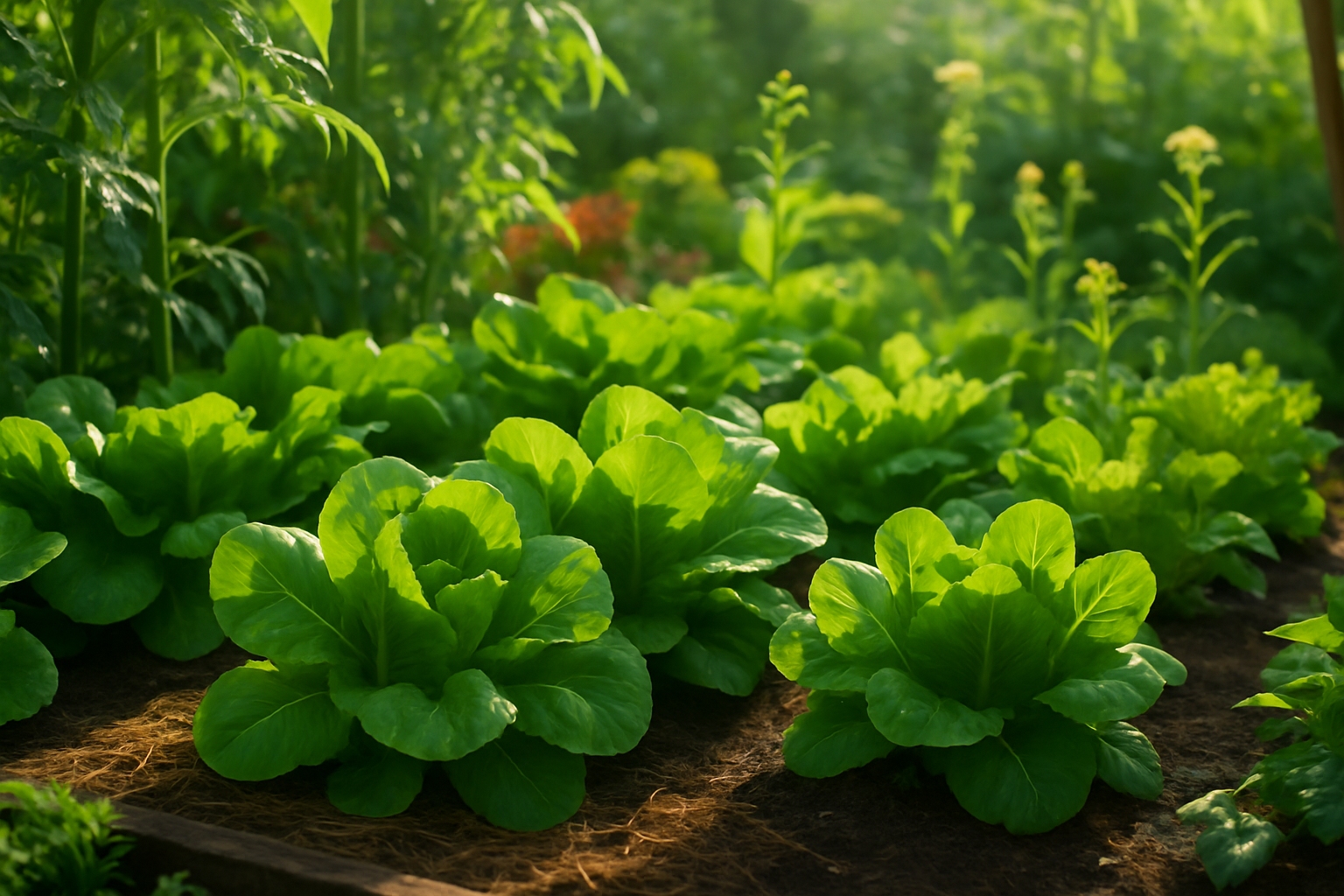How Sunlight Impacts Lettuce Growth
Sunlight plays a vital role in lettuce growth, especially by influencing photosynthesis and leaf development. During photosynthesis, lettuce plants use sunlight to convert carbon dioxide and water into sugars, which fuel their growth and help them develop crisp, vibrant leaves.
Without enough sunlight, you might notice your lettuce plants becoming leggy or stretched out as they reach for more light—a common sign of insufficient exposure. These leggy plants often have small, weak leaves and are more susceptible to disease. Additionally, low light usually leads to slow growth and pale leaves, meaning your salad harvest may be underwhelming in both size and nutrition.
On the flip side, too much direct sunlight, especially during hot summer afternoons, can cause lettuce to wilt, develop a bitter taste, or bolt (prematurely flower and produce seeds). Managing this balance is crucial. While lettuce is more shade-tolerant than many vegetables like tomatoes or peppers, it still thrives best with about 4 to 6 hours of morning or filtered sunlight.
For home gardeners, providing partial shade—using row covers, taller companion plants, or planting in areas with dappled sunlight—can help reduce heat stress and bitterness. Shaded environments also keep soil cooler, which slows bolting and extends the growing season, especially for tender lettuces like butterhead.
Ultimately, monitoring sunlight and making small adjustments ensures your lettuce crop remains sweet, crisp, and productive throughout the growing season.
Outdoor Lettuce — Ideal Sunlight Conditions

For outdoor lettuce, the ideal amount of sunlight is about six hours of direct exposure each day, preferably during the cooler morning hours or under filtered midday sun. Lettuce thrives with plenty of light, but too much harsh sun—especially in the afternoon or during the scorching summer days—can quickly cause wilting, bitterness, or bolting, when the lettuce shoots up a flower stalk and becomes tough.
Full sun works well in the mild days of spring or fall, but once the heat increases, partial shade is key to keeping your greens tender and flavorful. In hot climates or during summer, try planting lettuce alongside taller companion plants like tomatoes or corn, which provide natural dappled shade throughout the day.
Alternatively, shade cloth draped over hoops or stakes creates an excellent barrier against intense sun and heat, lowering surface temperatures underneath by several degrees. Row covers, typically used for frost protection, can also shield lettuce from excess sunlight and drying winds if left on during heatwaves.
Keeping soil consistently moist and mulching around your plants further helps prevent heat stress. With a little planning to manage sunlight, you can enjoy crisp, healthy lettuce from your garden—even when the weather turns up the heat.
Growing Lettuce Indoors — Light Sources & Tips

When growing lettuce indoors, providing your plants with enough light is essential for crisp, healthy leaves. Natural sunlight from a south-facing windowsill is ideal because it offers the brightest, most direct exposure—aim for at least 6 to 8 hours of light each day.
If your best windowsill faces east or west, supplemental light might be necessary, especially in winter or in apartments with shaded views. Compact patios and sunrooms can also work well, as long as there’s consistent, unblocked sunlight.
If natural light is limited, consider setting up grow lights. LED grow lights are energy-efficient, stay cool, and provide full-spectrum lighting that mimics sunlight, encouraging compact, vibrant lettuce growth. Fluorescent lights (T5 or T8 tubes) are an affordable alternative and suitable for leafy greens too, although they can run warmer and need to be hung closer to the plants—usually 6 to 12 inches away.
To prevent leggy, weak lettuce, position lights so they shine evenly over all the seedlings and adjust the height as plants grow, keeping lights just above the leaves. Set a timer for 12 to 16 hours of light per day, since lettuce requires longer exposure indoors than outdoors.
Rotate pots every few days if using window light to ensure all sides receive equal exposure and prevent plants from leaning. Watch for pale or stretched leaves, which indicate insufficient light, and make adjustments promptly.
With the right setup, even small urban spaces can yield robust, garden-fresh lettuce year-round.
Seasonal Sunlight Management Throughout the Year
Understanding how sunlight changes with the seasons is key to successful outdoor lettuce growing. In spring and fall, the sun sits lower in the sky, and daylight hours are shorter than in summer. This means cooler temperatures and less intense light. Lettuce thrives in these conditions, preferring around 10-14 hours of gentle sunlight daily, making early spring and late summer to early fall the best times for planting.
At higher latitudes, these windows are even shorter, so be sure to watch local frost dates and daylight shifts. For spring crops, start seeds 2-4 weeks before your last expected frost, possibly using a cold frame—a simple, transparent cover that traps warmth and shields seedlings from chilly nights, giving them an early boost.
For fall, sow seeds about 8 weeks before your first anticipated frost to give plants time to mature while days are still long enough. As summer sun intensifies, use row covers or lightweight shade cloth to protect lettuce from heat stress—this helps maintain tender leaves and prevents bolting.
With season extenders like cold frames in early spring and fall, and shade structures during the peak of summer, you can maximize your lettuce harvest and enjoy fresh greens over a longer part of the year.
Troubleshooting Sunlight-Related Lettuce Problems
Lettuce is sensitive to the amount of sunlight it receives, and getting it right means recognizing and addressing key symptoms. If your lettuce looks leggy, with long, stretched stems and pale leaves, it probably isn’t getting enough sun. You might also notice slow growth, as lettuce needs at least 5–6 hours of sunlight daily to thrive.
If you’re growing lettuce in containers, try moving them to a brighter spot; for garden beds, consider trimming back overhanging branches.
On the other hand, too much sunlight—especially during hot afternoons—can cause leaf scorching (browned, crispy patches), sudden bolting (premature flower stalks), or wilting, even when the soil is moist. To protect lettuce from harsh rays, use a lightweight shade cloth during the hottest part of the day or plant lettuce where it gets morning sun and afternoon shade.
It’s also essential to adjust watering: lettuce dries out quickly under intense light and heat, so water deeply in the early morning, keeping the soil consistently moist but never soggy. Mulching around the plants can also help regulate soil temperature and retain moisture.
Striking the right balance among sunlight, temperature, and water is crucial. Observe your lettuce daily and tweak your care routine as needed—shifting containers, adding shade, or varying water frequency—so your lettuce stays lush and productive, no matter the weather.
FAQs — Sunlight Needs for Lettuce
Lettuce prefers plenty of sunlight but is surprisingly adaptable. While it won’t thrive in deep, full shade, it can tolerate partial shade—especially in hotter climates where strong afternoon sun may cause leaves to wilt or taste bitter.
Ideally, lettuce needs 6–8 hours of direct sunlight outdoors. If you’re growing it indoors, aim for at least 12–14 hours of bright, indirect light daily, ideally using grow lights positioned a few inches above the leaves.
Watch for signs of sun stress: lettuce that gets too much sun may develop scorched, crispy, or yellow edges, while too little light results in leggy, pale plants that stretch upward without producing full heads. If you notice these issues, adjust your containers or grow lights to find a better light balance.
For urban gardeners with only a windowsill, southern exposure works best. If that’s not available, supplement with LED or fluorescent grow lights on a timer to mimic day length. Remember, a little trial and error is normal—observe how your lettuce responds and don’t be afraid to reposition plants until you find that sunlight sweet spot for healthy, flavorful leaves.
